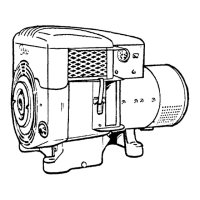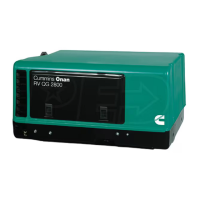FUEL
SYSTEM
RECOMMENDED
FUEL
Use ASTM 2-D or 1-D fuel with a minimum Cetane
number of'45*. Number 2 diesel fuel gives the best
economy for most operating conditions; however,
use ASTM 1-D fuel during the following conditions:
1.
When ambient temperatures are below 32° F
(0
o
C)
2.
During long periods of light engine
load;
or no
load.
*NOTE:
Fuels with Cetane numbers higher than 45 may be
needed in higher altitudes or when extremely low ambient
temperatures are encountered to prevent misfires.
Use low sulfur content fuel having a pour point
(ability to filter) of at least 10
o
F (6
0
C) below the
lowest expected temperature. Keep the fuel clean
and protected from adverse weather. Leave some
room for expansion when filling the fuel tank.
Due to the precise tolerances of diesel injec-
tion systems, it is extremely important the
fuel be kept clean. Dirt in the system can cause severe damage to
both the injection pump and the injection nozzle.
CAUTION
-ION)
WARNING
Leakage of fuel in or around the compart-
ment is a serious fire hazard. The ventilation
system should provide a constant flow of air to expel any accumu-
lation of fuel vapor while the vehicle is in transit. Compartments
must be vapor tight to the interior to keep fumes from within the
vehicle.
FUEL
CONSUMPTION
It should be noted that under varying electrical loads,
fuel consumption of engines for recreational vehicle
generator sets varies accordingly. Average fuel
con-
sumption at rated load is 1.30 gallons per hour.
2.
cle fuel system must be in accordance with chas-
sis (vehicle) manufacturers' detailed installation
instructions.
Install an approved flexible non-metallic and
non-organic fuel line between the vehicle fuel
system and the engine to absorb vibration.
3. Use of seamless steel tubing and flared connec-
tions are recommended for long runs between
the fuel tank and the flexible connector to the
generator set.
4.
Run fuel lines at the top level of tank to a point as
close to the engine as possible to reduce danger
of fuel siphoning out of tank if the line should
break.
5. Keep fuel lines away from hot engine or exhaust
areas.
Connect 7/16 inch fuel return line from bleeder
valve on injection pumptotopof fuel supply tank.
When sharing the fuel tank with vehicle engine,
use a separate fuel line for each engine to avoid
starving the generatorset. Keepfueltank pick-up
off the bottom of the tank to reduce the chance of
contaminants clogging the fuel line.
8. Flexible line must be long enough to allow for 4"
of set movementto prevent binding, stretching or
breaking because of set movement.
9. Install lines so they are accessible and protected
from damage.
10.
Use metal straps without sharp edges to secure
the fuel lines.
11.
Do not run fuel line in conjunction with electrical
wiring.
12.
For servicing, install a shut-off valve at the fuel
tank.
6.
7.
FUEL
LINES,
RETURN
LINE
AND
FUEL FILTERS
Fuel Lines
1.
Most electric generating set installations are
designed to share the vehicle fuel supply tank
with the vehicle engine. All connections to
vehi-
Fuel
Filters
This generator set is equipped with a primary and
secondary in-line fuel filters.
Operating the generator set from a tee in the main fuel line can
cause erratic operation when vehicle is operated at highway
speeds. The set's fuel pump has neither the capacity nor the power
to overcome the draw of vehicle engine fuel pump.

